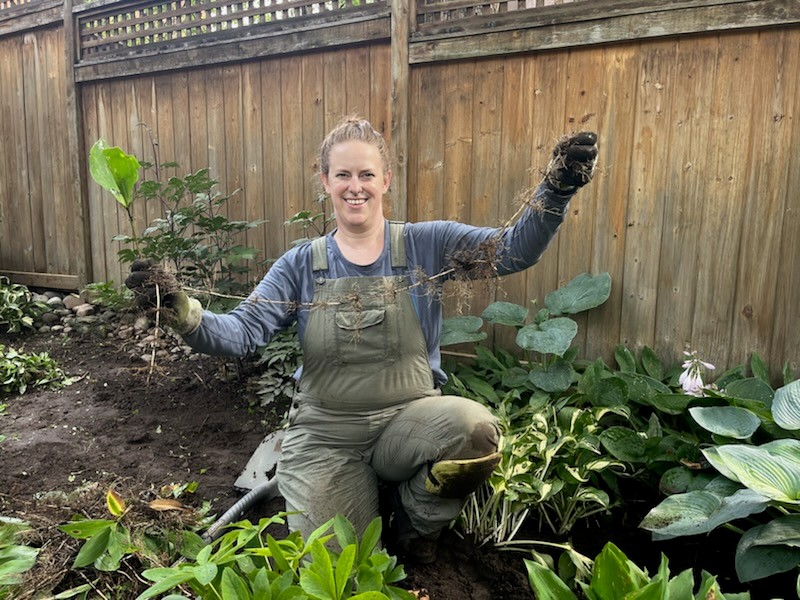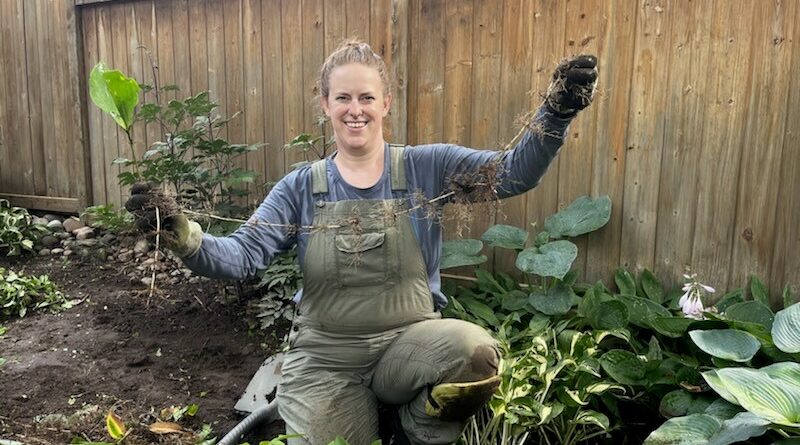“It’s not invasive in my yard”
How this myth about invasive species harms Sandy Hill biodiversity
Christina Keys
Periwinkle, lily of the valley, goutweed, daylilies, barberry, and burning bush are beautiful yet ecologically harmful plants that are commonly found in Sandy Hill gardens. These plants are for sale in most garden centres around Ottawa, even though all are categorised as invasive species by scientists.
Inevitably, cultivated invasive species escape yards and invade natural areas where they outcompete native species, creating a dead zone of vegetation that does not support the local insects, birds, and mammals that rely on native plants. In fact, most invasive plants were introduced to wild ecosystems through our landscaping. Goutweed and Norway maples have spread from Sandy Hill yards to Strathcona Park and the banks of the Rideau River. Some people feel that plants like goutweed do no harm when confined to their own gardens or yards. However, even the most experienced and diligent gardener cannot control an invasive species. Birds eat the seeds and deposit them in other areas, and wind blows the seeds away.
Little regulation
Why are these plants even for sale if they do such harm? Very few plants in the horticultural trade are regulated in Canada, despite the enormous cost to all levels of government, the agricultural sector, and to biodiversity. The Canadian Coalition for Invasive Plant Regulation is trying to change this by lobbying at the federal level for regulations to limit the sale of these harmful species.
Wild invasive species
Unfortunately, cultivated invasive species are not the only threat to our biodiversity. Japanese knotweed, dog-strangling vine, and common and glossy buckthorn are no longer for sale in Canada, yet they are increasingly abundant in Sandy Hill and across the region. It is not hard to see the devastation caused by each type of invasive species in natural spaces, especially Strathcona Park and along the Rideau River.
The Environment Committee of Action Sandy Hill and the Sandy Hill Green Team have been diligently removing these species and replacing them with native species, yet berries or seeds may have already travelled to your yard. Any garden will inevitably attract wild invasives; buckthorn seeds are deposited by birds and dog-strangling vine’s fluffy seeds are spread by the wind.
Identifying and removing

Photo: Christina Keys
You can help alleviate the biodiversity crisis by removing invasive species from your yard, whether previously purchased or wild. Start by identifying all species in your yard including mystery shrubs and plants. Check your list against the Ontario Invasive Plant Council’s list of invasive plants in their Grow Me Instead brochure or the Auditor General of Ontario’s Management of Invasive Species report.
To identify and remove invasive plant species, Ontario’s Invading Species Awareness Program has excellent visual guides as well as removal guidelines. Combined with an app like Picture This or PlantSnap, next summer you’ll easily be able to identify them. Removing and safely disposing of invasives can be hard work, so consider only removing the flowers or seed heads to prevent further spread if removing the entire plant is not yet possible.
If you rent or outsource your yard work, talk to your gardener, landscaper, landlord, or condominium association about their management of invasive species. Ask if they are aware of the harm of commercially available invasive species.
Transforming dead zones
Identifying and removing invasive plants is the hard part. The fun part is replacing these harmful species with beautiful, non-invasive alternatives or even beneficial native plants. Native groundcovers for shade include wild geranium, woodland strawberry and wild ginger. Don’t forget bunchberry, Canada’s unofficial national flower that is found in every province and territory.
For sunny spots, low-growing and salt-tolerant plants that can be grown streetside include pearly everlasting, wild columbine, hairy beardtongue, nodding onion and prairie smoke.
Planting any of these species will help to transform your garden into a thriving, beneficial ecosystem.
To volunteer with the Environment Committee of Action Sandy Hill, contact sandyhillec@gmail.com.

Photo: Tara Beauchamp
